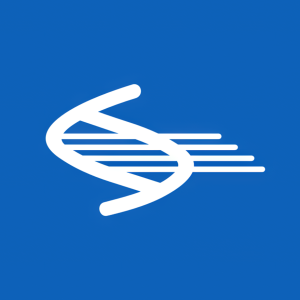Applied DNA Announces Strategy to Address Omicron SARS-CoV-2 Variant, Introduces Linea™ 2.0 COVID-19 Assay Kit
- Linea™ COVID-19 Assay Kit Likely Subject to Unique Double S-Gene Target Drop, Enables Rapid Reflex Testing of Positive Samples to Confirm Probable Presence of Omicron Without Sequencing -
- Company to Submit Validation Data to
The Company also announced that its EUA-authorized Linea™ COVID-19 Assay Kit (the “Linea 1.0 Assay”) likely exhibits a unique double S-gene target failure (or “drop”) (SGTF) specific to the Omicron variant. While other assays have been shown to have SGTF based on the presence of the Δ69-70 mutation contained in Omicron, this specific mutation is shared across several SARS-CoV-2 lineages and is not specific to the new variant. Based on the Company’s initial analysis, the Company believes that the combination of mutations that cause the unique double SGTF in the Linea 1.0 Assay is unique to Omicron. This unique double SGTF may result in false negative results in patients infected with the Omicron variant when tested with the Linea 1.0 Assay as a primary diagnostic. This unique pattern may, however, allow the Linea 1.0 Assay to provide a high-specificity reflex test for the Omicron variant. More specifically, the Linea 1.0 Assay may be potentially used as a reflex test to indicate the presence of Omicron in samples that have tested positive for COVID-19 via third-party assays that cannot discriminate for the new variant because these same samples will test negative on the Linea 1.0 Assay due to the unique double SGTF.
Analysis in silico of the mutations represented in the Omicron variant’s genome sequences publicly available in GISAID (the online SARS-CoV-2 genome sequence database) shows that neither of the Linea 2.0 Assay targets are affected by the variant’s mutations. Validation testing for the Linea 2.0 Assay for both single sample and pooled testing is already complete. The Company intends to submit its validation data as a Laboratory Developed Test (LDT) to the NYSDOH in the next few days. The validation data for the Linea 2.0 Assay show the performance of the new assay meets or exceeds the performance of the Linea 1.0 Assay.
Dr.
About the Linea™ COVID-19 Assay Kit
The Linea™ COVID-19 Assay Kit is a real-time RT-PCR test intended for the qualitative detection of nucleic acid from SARS-CoV-2 in respiratory specimens, including anterior nasal swabs, self-collected at a healthcare location or collected by a healthcare worker, and nasopharyngeal and oropharyngeal swabs, mid-turbinate nasal swabs, nasopharyngeal washes/aspirates or nasal aspirates, and bronchoalveolar lavage specimens collected by a healthcare worker from individuals who are suspected of COVID-19 by their healthcare provider (HCP). The test is also intended for use with anterior nasal swab specimens that are self-collected in the presence of an HCP from individuals without symptoms or other reasons to suspect COVID-19 when tested at least weekly and with no more than 168 hours between serially collected specimens.
The scope of the Linea™ COVID-19 Assay Kit EUA, as amended, is expressly limited to use consistent with the Instructions for Use by authorized laboratories, certified under the Clinical Laboratory Improvement Amendments of 1988 (CLIA) to perform high complexity tests. The EUA will be effective until the declaration that circumstances exist justifying the authorization of the emergency use of in vitro diagnostics for detection and/or diagnosis of COVID-19 is terminated or until the EUA’s prior termination or revocation. The diagnostic kit has not been FDA cleared or approved, and the EUA’s limited authorization is only for the detection of nucleic acid from SARS-CoV-2, not for any other viruses or pathogens.
About
Applied DNA is commercializing LinearDNA™, its proprietary, large-scale polymerase chain reaction (“PCR”)-based manufacturing platform that allows for the large-scale production of specific DNA sequences.
The LinearDNA platform has utility in the nucleic acid-based in vitro diagnostics and preclinical nucleic acid-based drug development and manufacturing market. The platform is used to manufacture DNA for customers as components of in vitro diagnostic tests and for preclinical nucleic acid-based drug development in the fields of adoptive cell therapies (CAR T and TCR therapies), DNA vaccines (anti-viral and cancer), RNA therapies, clustered regularly interspaced short palindromic repeats (CRISPR) based therapies, and gene therapies. Applied DNA has also established a COVID-19 diagnostic and testing offering that is grounded in the Company’s deep expertise in DNA.
The LinearDNA platform also has non-biologic applications, such as supply chain security, anti-counterfeiting, and anti-theft technology. Key end-markets include Gov/Mil, textiles, pharmaceuticals and nutraceuticals, and cannabis, among others.
Visit adnas.com for more information. Follow us on Twitter and LinkedIn. Join our mailing list.
The Company’s common stock is listed on NASDAQ under ticker symbol ‘APDN,’ and its publicly traded warrants are listed on OTC under ticker symbol ‘APPDW.’
Applied DNA is a member of the Russell Microcap® Index.
Forward-Looking Statements
The statements made by Applied DNA in this press release may be “forward-looking” in nature within the meaning of Section 27A of the Securities Act of 1933, Section 21E of the Securities Exchange Act of 1934 and the Private Securities Litigation Reform Act of 1995. Forward-looking statements describe Applied DNA’s future plans, projections, strategies, and expectations, and are based on assumptions and involve a number of risks and uncertainties, many of which are beyond the control of Applied DNA. Actual results could differ materially from those projected due to its history of net losses, limited financial resources, limited market acceptance, the possibility that Applied DNA’s assay kits or testing services could become obsolete or have its utility diminished and the unknown amount of revenues and profits that will results from Applied DNA’s testing contracts. Further, the uncertainties inherent in research and development, future data and analysis, including whether any of Applied DNA’s or its partner’s future diagnostic candidates will advance further in the research process or receiving authorization, clearance or approval from the FDA, equivalent foreign regulatory agencies and/or the
View source version on businesswire.com: https://www.businesswire.com/news/home/20211129005253/en/
Investor Contact:
Program Manager: Dr.
Web: www.adnas.com
Twitter: @APDN
Source:







